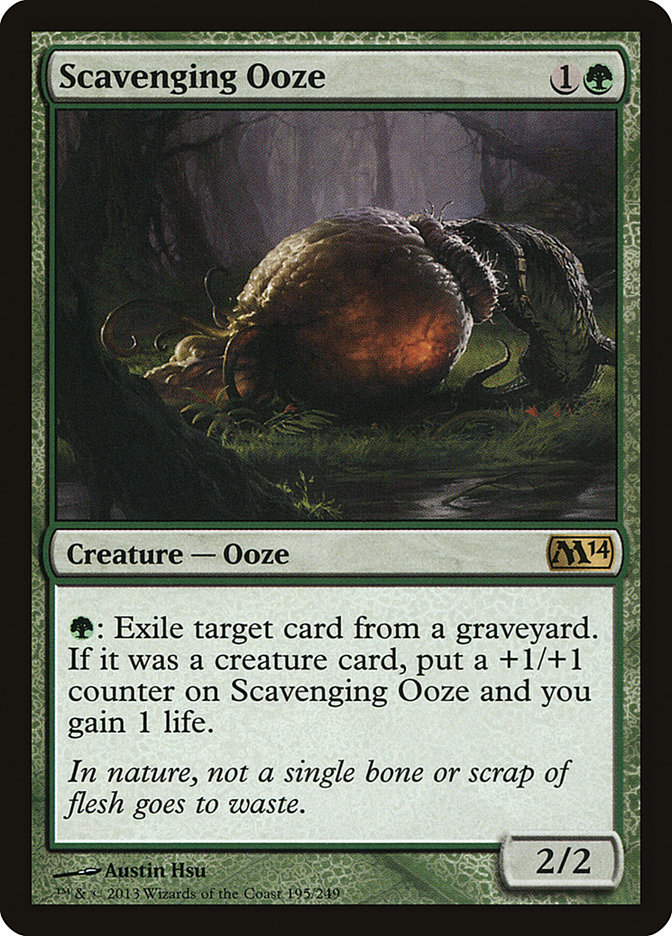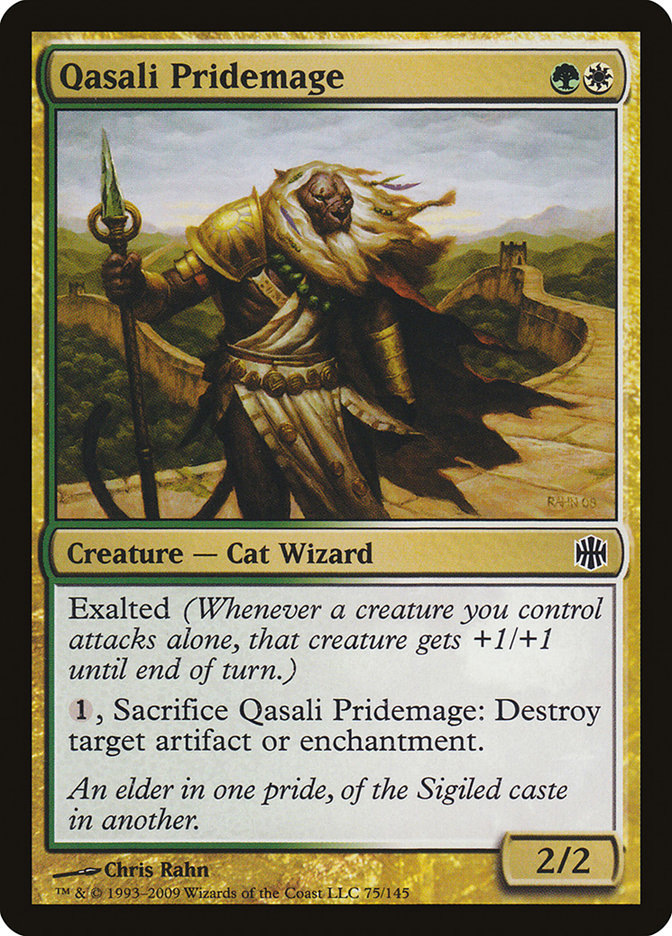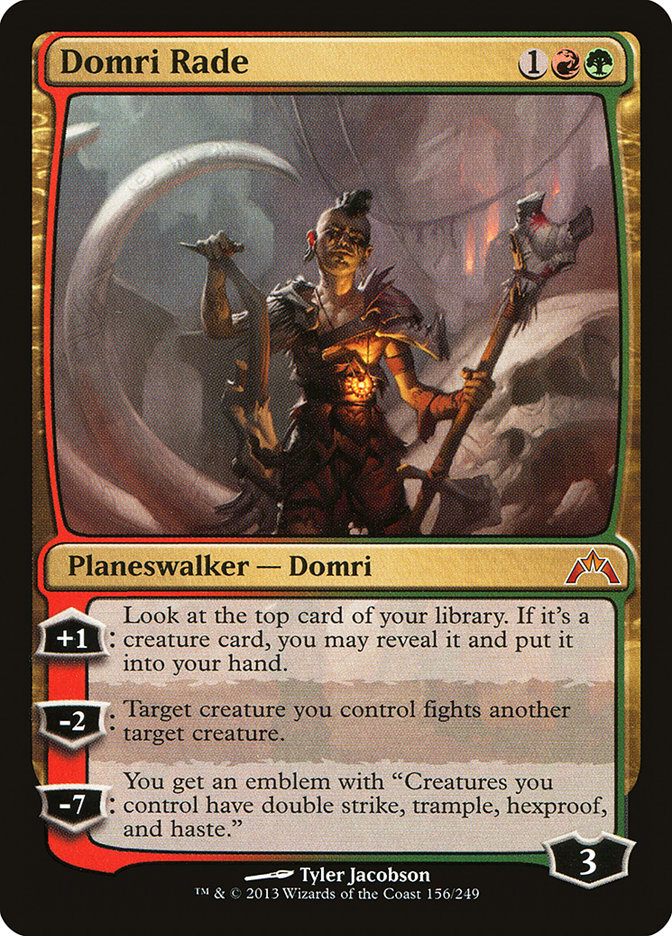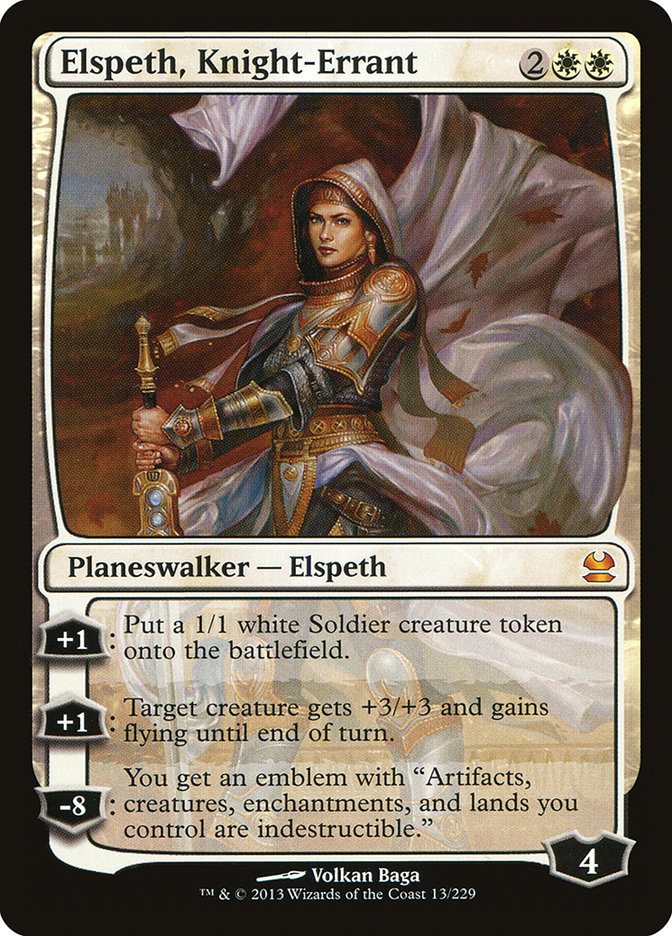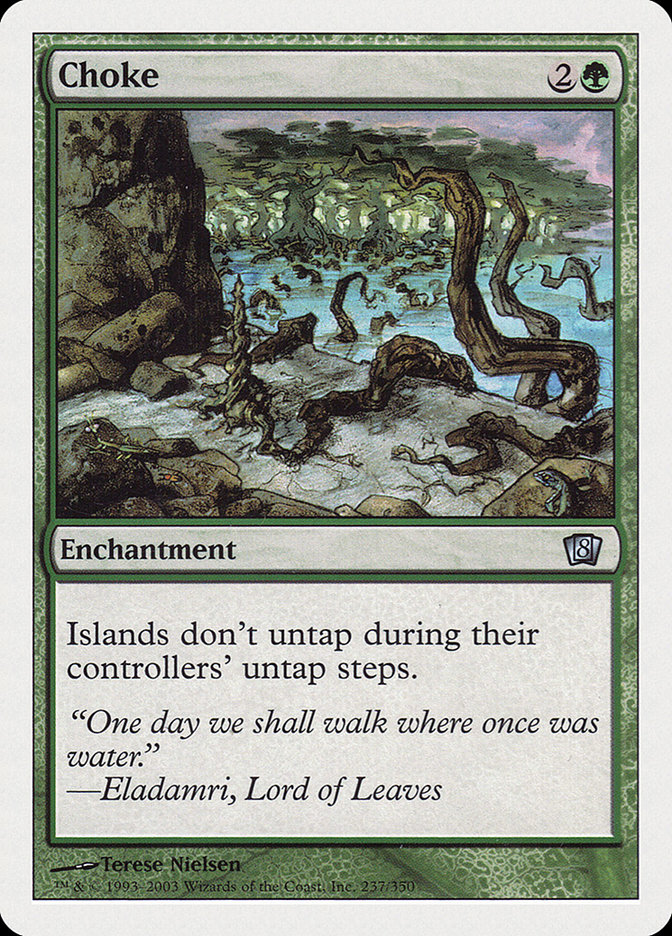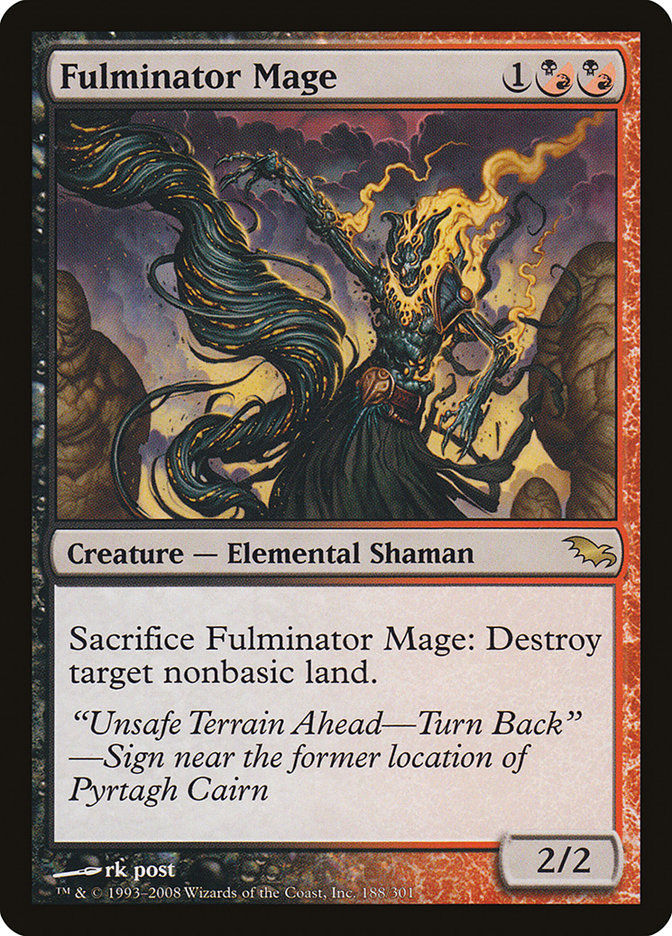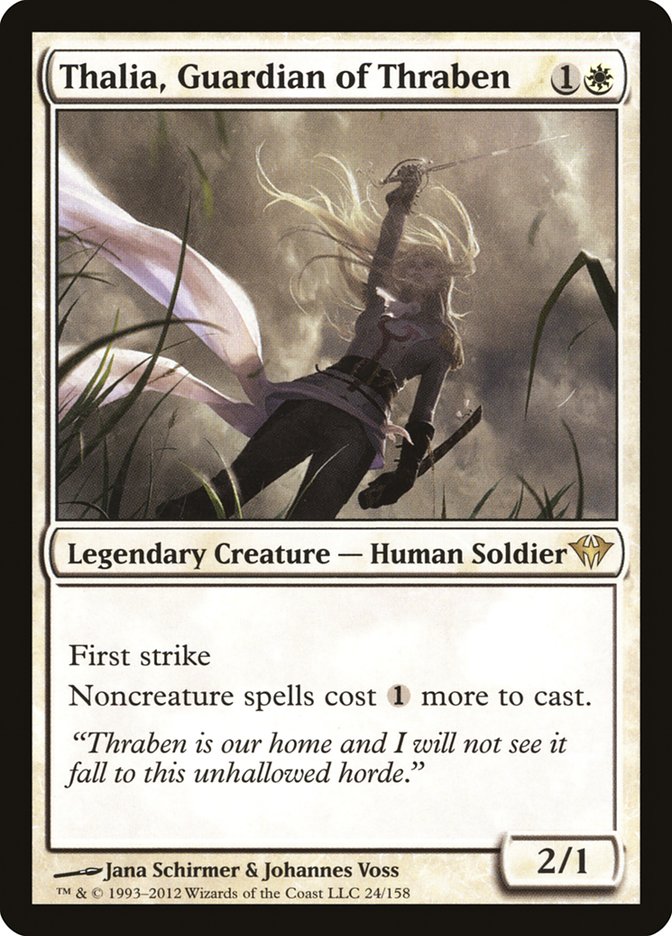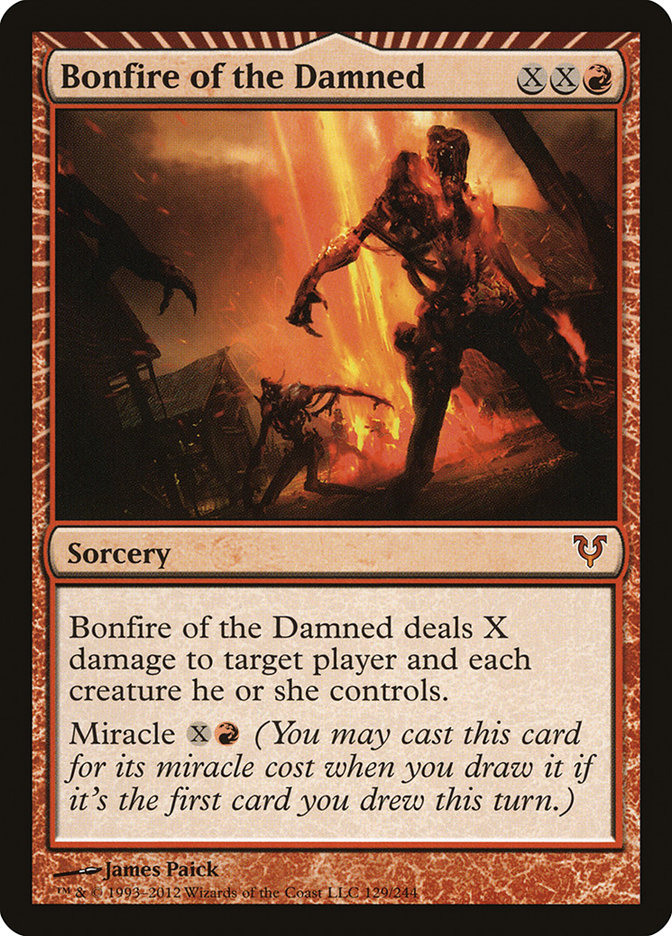Pro Tour Born of the Gods was one of the most disappointing tournaments that I have ever played in. Going in I felt like I had an excellent understanding of both the Constructed and Limited formats for the event. My song for the tournament was one of my favorites in recent memory, Tritional’s "Now or Never"—as in if there’s any tournament I’m going to win, it’s going to be this one where I get to play with all of my favorite cards reunited once again.
My playtesting began in earnest about three weeks before the Pro Tour when the banned and restricted list announcement went up. I’d made some predictions about what that announcement would look like but didn’t want to spend a significant amount of time testing an uncertain format, especially one that was already well defined by Magic Online and Grand Prix results. I was fairly certain something major would happen to shake things up, and putting a lot of time into playing games with decks that might not be legal didn’t seem like a great use of my time.
Once the announcement hit, I got started right away. Normally testing on Magic Online for a Pro Tour is pretty much impossible because the newest set isn’t available until just before the event. In this instance, however, I was able to test pretty much everything I wanted since it didn’t look like Born of the Gods included many cards that were likely to have an impact on the format.
This is one of the peculiarities of Modern Pro Tours. The events exist ostensibly to promote the cards in the new set, yet Modern is such a large and powerful format that it’s rare for any given set to have cards that impact it significantly. Born of the Gods was no exception, with only Courser of Kruphix looking like it would see even fringe play in the format, which meant that I could test against teammates online well before the set was live there.
To the surprise of no one, my initial testing focused on Naya. I had been playing various incarnations of Naya in Modern since Grand Prix San Diego last spring, where my then new brew took me to a Top 8 finish. The deck had taken some hits in that time, with the printing of Scavenging Ooze significantly reducing the ability of Knight of the Reliquary to win long games against other creature decks, a strength of the card that had already taken a hit from Deathrite Shaman.
Now, however, Deathrite Shaman was gone. Not only that, but Wild Nacatl was back. To say that I was excited about the prospects of Naya in the new Modern world would be an understatement.
Modern is a big format, which can make preparing for it a somewhat daunting task, especially after a large shift that can throw off metagame predictions. But you have to start somewhere. These were my predictions going into the event.
- Snapcaster Mage decks would be the most popular broad archetype in the room. This included both U/W/R Control and U/W/R Tempo along with "Tempo Twin" style combo decks. I thought that the banning of Deathrite Shaman would lead to a Snapcaster resurgence, particularly at the Pro Tour since these are exactly the kind of decks that people who see themselves as good at Magic like to play.
- Melira Pod would be one of the best performing decks but not the most popular. Pod was arguably the best deck prior to the bannings, and in the eyes of many players it improved as a result of Deathrite Shaman’s departure. I actually disagree with that assessment for several reasons. First is that Deathrite Shaman was actually a central part of Pod’s ability to win fair games of Magic itself, which was part of the deck’s strength. Second is the fact that most Deathrite Shaman decks were actually good matchups for Pod despite the card itself being able to help disrupt the graveyard-based elements of the combo.
- Zoo would be out in force, and people would be prepared for it. The unbanning of Wild Nacatl was sure to lead to a resurgence of aggressive decks, and I didn’t expect anyone to be taken by surprise. I anticipated a field full of anti-aggro measures like Kitchen Finks, Wall of Omens, and Anger of the Gods. The last of these in particular felt like it would be a defining card of the format since it’s powerful against both Zoo’s Wild Nacatl and Kird Ape and Pod’s Kitchen Finks and Voice of Resurgence.
- Faeries would not be a major player. Bitterblossom was banned because it was a bogeyman, not because it was actually too good. Most of the cards in Faeries just don’t have what it takes to compete on the same level as the best decks in Modern right now. Spellstutter Sprite, Scion of Oona, and Mistbind Clique are just outclassed.
- Combo in general would experience a rise in popularity. The banning of Deathrite Shaman was sure to lead to a decline in the number of black midrange decks in the field and along with them the number of Thoughtseize and Liliana of the Veil one could expect to face. It seemed clear that we’d see more decks like Splinter Twin, Scapeshift, Storm, and Goryo’s Vengeance as a result.
So how did this lead to me playing Naya? Why would I want to play Zoo in a field that I felt would be full of people prepared to beat Zoo? Well, here’s the thing—the cards people play to beat Zoo decks don’t beat the Zoo decks that I play. People use deck classifications like "Zoo" because it’s a convenient way to lump together decks with similar characteristics, but the reality is that two decks with Wild Nacatl can have dramatically different game plans and thus radically different strengths and weaknesses.
For most Zoo decks, Wild Nacatl and friends are plan A. Those decks are packed full of cheap creatures they hope to use to overwhelm the opponent’s defenses before they can react along with tools like Ghor-Clan Rampager to help push through damage and burn spells to finish the opponent off. These decks aim to end the game as quickly as possible and focus on speed over power. As a result, these decks suffer in longer games as their cards are outclassed and are vulnerable to cards that can stymie their aggressive openings, such as Kitchen Finks, Anger of the Gods, and Engineered Explosives.
That’s not how my Naya decks operate. While the average Zoo deck is firmly aggressive, my decks are definitely midrange. While I can have aggressive draws with Wild Nacatl, I don’t rely on them as my primary route to victory in most matchups. If my opponent plays a Kitchen Finks, it’s more of a temporary annoyance than a major issue because my exalted creatures allow me to attack into it without fear and Knight of the Reliquary gives me the tools to win a long game. When people are building their decks to beat "Zoo," most of the cards they’re using to do so aren’t actually cards that are good against me at all.
Over the course of testing, my list shifted quite a bit, but it ultimately came back to the same core. I tried cutting down my curve to make the deck more aggressive with the inclusion of Wild Nacatl, but I found doing so made me more vulnerable to exactly the cards people were playing to beat Zoo decks. It’s remarkable how big of a difference just a few slots can make. When I tried the deck with Voice of Resurgence in lieu of Loxodon Smiter, I got absolutely devastated by U/W/R with Anger of the Gods. When I switched back, I won almost every game.
Here is what I played in Valencia:
Creatures (24)
- 4 Tarmogoyf
- 4 Wild Nacatl
- 4 Noble Hierarch
- 4 Knight of the Reliquary
- 2 Qasali Pridemage
- 3 Scavenging Ooze
- 3 Loxodon Smiter
Planeswalkers (3)
Lands (23)
Spells (10)

Some thoughts on individual cards:
Scavenging Ooze is a card that went in and out of the deck in various numbers throughout testing. It’s a powerful card, though it can be fairly slow and isn’t highly impactful in some matchups. It’s also fairly weak against Anger of the Gods, both because it can be swept up in the spell itself and because Anger significantly reduces the amount of food available for your Ooze after the fact. That said, it’s very strong against Pod and gives you tools to interact with Snapcaster Mage and more degenerate graveyard strategies, so it’s an important inclusion.
Qasali Pridemage is the unsung hero of Naya decks. Not only does it provide you with a flexible answer to anything from Cranial Plating and Splinter Twin to Blood Moon and Birthing Pod to Daybreak Coronet, but it also offers up an exalted trigger, which can be key to attacking into Kitchen Finks, Tarmogoyf, and more. Pridemage is your worst card in a lot of matchups, but it’s also absolutely indispensable in others and gives you a lot more sideboard room because you don’t have to have as many answers to artifact- or enchantment-based strategies.
Domri Rade is more than just a pet card of mine. It’s one of the most powerful tools for a creature-based deck to fight against opposing removal. Decks like U/W/R have access to a huge number of removal spells alongside Snapcaster Mage, which can make it very difficult to keep threats in play. Ultimately, their plan is to run you out of creatures and eventually grind you down with Celestial Colonnade. The best way to fight against this kind of strategy is with noncreature threats, and Domri is the best of these that is available to play in your maindeck. Domri can provide a steady stream of creatures to feed to their removal spells while ticking up and threatening to ultimate, and against opposing creature decks he offers a source of removal that can also act as a proactive threat.
Elspeth, Knight-Errant is another noncreature threat against control decks as well as a card that can break creature stalemates wide open. Elspeth used to be an excellent defensive tool against creature decks but has gotten weaker due to cards like Ghor-Clan Rampager and Geist of Saint Traft offering ways to break through her Soldier protection. I’ve played Thundermaw Hellkite in this role before when I’ve had Blood Moon in my sideboard, but I generally prefer Elspeth otherwise due to her resilience to removal effects.
The most common thing people say when they see Choke in the sideboards of my Modern decks is "Choke is legal?!" Yes, Choke is legal and is one of the few remaining ultra-powerful color hosers from Eighth Edition. Choke is another excellent noncreature threat against control decks, albeit one that can vary widely in its effectiveness based on the composition of the opponent’s draw. Choke is intended as a tool against Splinter Twin and Storm decks that also overlaps against U/W/R since in the case of the latter it needs support in order to be particularly effective.
This is that support. Fulminator Mage is a powerful tool against any deck with a precarious mana situation and is especially effective in combination with Choke against mana-intensive blue decks. Fulminator offers a way to interact with decks like Scapeshift that are otherwise difficult to disrupt. This was actually my least favorite sideboard card over the course of the tournament, and I could certainly see replacing it.
Big Zoo is not a deck that naturally performs well against fast combo decks. While aggressive Zoo decks can hope to race against decks like Storm, Living End, and Goryo’s Vengeance, that’s not a realistic plan for midrange Naya, so you need some kind of trump. Thalia, Guardian of Thraben was the card that I reached for that has the broadest applications against the various non-interactive combo decks I expected to face at the tournament with the added benefit that it could be impactful against spell-based control decks like U/W/R as well.
Thalia, Fulminator Mage, and Choke are all very synergistic and aim to restrict the opponent’s options while Wild Nacatl kills them. I tried splashing blue for Swan Song before Thalia, but I found that my threats were too expensive to keep mana up and felt like I needed something more proactive. I think Swan Song is a better tool for decks like Tribal Zoo with a bunch of one-drops but Thalia is a better fit here.
I originally had more Bonfire of the Damned since it’s a powerful tool against Pod, Affinity, and token decks, but I wanted stronger tools against both Affinity and Auras and changed two Bonfires to Fracturing Gust. Gust is an oft-overlooked card that has much of the same power as Shatterstorm against Affinity with several additional upsides—it can catch either type of Nexus because it’s an instant, and it also provides an out against Daybreak Coronet and friends. Amusingly, I ended up on both ends of the Bonfire vs. Gust dilemma in the tournament, as I beat an Auras deck with Gust but lost to Craig Wescoe’s W/B Tokens deck where I really could have used more Bonfires.
All told, I was quite happy with how my deck turned out and how it felt like it was positioned in the tournament. Unfortunately, things didn’t work out for me. I started the tournament with a 3-0 record in my first draft and then won my first few Modern rounds to make it to 5-0 before talking my first loss in a close match followed by another the last round of the day to leave me at 6-2 going into the second day.
I had another solid deck in the second draft, but things didn’t go my way. I ended up 1-2 and then couldn’t find more wins when I got back to Modern. Ultimately, I only went 5-5 in the Modern portion, beating three fast Zoo decks, U/R Control, and Auras and losing to Melira Pod, U/W/R, Burn, Merfolk, and W/B Tokens. All of my losses were very close, and I felt like I got pretty unlucky to lose in many of them. I’d be happy to play the tournament over with the same deck again.
I want to play the format again so much that I actually booked a flight to Grand Prix Richmond next weekend despite the fact that I have to be in Austin, Texas on Friday night to speak on a panel at the SXSW Gaming Expo. I paid an absolutely ludicrous amount of money for a 6 AM flight that barely gets me into Richmond in time to make it to the venue once my byes are up because I’m a crazy person and really want to attack with Wild Nacatl again. I’m definitely happy with the core of my deck, but I’m going to be trying some variations over the next week, especially in my sideboard, to do everything I can to make my trip worth it.
What do you think? What decks do you expect to be big in Richmond and what’s the best way to attack them?

